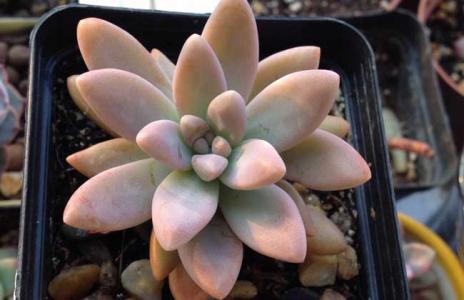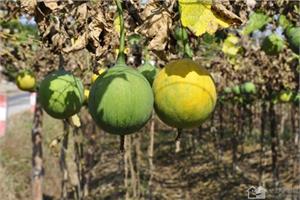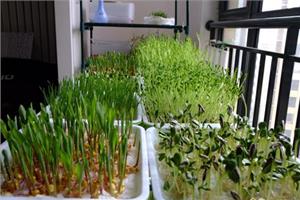Introduction to the cultivation techniques of Qiuli
Qiuli's leaves are slender, the front is smooth and slightly concave, the back is obviously keel-like, and the tip is slightly pointed, but the whole is still more round. The growth rate of Qiuli is relatively fast, the leaves are rosette, the lower leaves are easy to wither and fall, and then the lateral buds sprout from the lower part of the stem, forming groups. Flowering spring, Cymes, yellow star-shaped five-petal or six-petal florets, very fresh and lovely. Today, I would like to briefly introduce the cultivation techniques of Qiuli.

Mode of reproduction:
Qiuli reproduction can be used to cut the top to promote the growth of tiller buds, leaf insertion and other methods. The success rate of reproduction is very high. Healthy, mature and intact leaves can be cut in spring and autumn (also in winter in the north of the Yangtze River). Slightly tilt or flat leaves on vermiculite, peat or coconut bran, keep a little moisture, will soon take root at the base and grow new buds.
When the new buds grow a little bigger, they can be planted separately and become new plants. In addition, the young plants germinated next to the old ones can also be used for cuttings. The cut should be dried before insertion, and then the lower stem should be shallowly buried in the sand. Other matters needing attention are inserted in the same leaf. Loose sandy soil should be used in the planting medium so that the root system of the plant can grow well.
Soil requirements:
Qiuli should be cultivated in neutral sandy soil with good drainage and permeability to facilitate the removal of excess water and the growth of plant roots. It can be prepared with pine needle soil, vermiculite, rotten leaf soil and sandy soil, and cinder and sifted red jade soil, deer marsh soil, volcanic stone and other particles can also be added. Change the basin every 1-2 years in the spring to cut off the necrotic old roots. The soil nitrogen content should not be too high.
Lighting conditions:
The more sufficient the light is and the greater the temperature difference between day and night is, the brighter and moist the color of Qiuli leaves will be. When the temperature permits, it is best to put it outside for maintenance to ensure sufficient light. When the light is insufficient or the soil moisture is too much, the color of the whole plant is dim and green, the leaf sparse spacing lengthens, accelerates the upward growth, seriously affects the ornamental ability, and may even die because of the hindrance of plant photosynthesis.
Water condition:
Because of the high water content in the plant, Qiuli is easy to rot in the excessive humid environment. Don't water too much. In order to avoid water deposition in the roots, it is best to choose pots with drainage holes at the bottom, red pottery pots with good air permeability can be used for beginners (but may affect the fullness of leaves); glass containers with heat absorption and poor air permeability should be used with caution. Can be about 10 days once, each time can be thoroughly watered.
Temperature conditions:
In general, stop growing or mild frostbite when the temperature is below 5 degrees Celsius, and the water frozen cells in the leaves below 0 degrees Celsius are necrotic. When the temperature is too high (more than 35 degrees Celsius) or too low (less than five degrees Celsius) in winter and summer, the plant growth should be temporarily reduced or stopped, and the watering frequency should be restored when the temperature is suitable. Pay attention to ventilation during high temperatures in summer to prevent prolonged exposure to the sun.
Trim and shape:
Usually, the dry old leaves of Qiuli should be removed in time so as not to accumulate and lead to the growth of bacteria. When the plant grows excessively or grows too high, it can be shaped by pruning the top branches and leaves and controlling the height of the plant to maintain the beauty of the plant type. The top part of the cut can be inserted into the sandy slightly tidal basin soil to take root after drying the wound, thus becoming a new plant. The stems, branches and leaves at the bottom of Qiuli can germinate more lateral buds.
The above is the editor to introduce Qiuli's cultivation techniques to you. I hope it will be helpful to you!
Related
- Wuhan Hospital Iron Tree Blooming Result Was Instantly Frightened by the Gardener Master
- Which variety of camellia is the most fragrant and best? Which one do you like best?
- What is the small blue coat, the breeding methods and matters needing attention of the succulent plant
- Dormancy time and maintenance management of succulent plants during dormancy
- Minas succulent how to raise, Minas succulent plant pictures
- What are the varieties of winter succulent plants
- How to raise succulent plants in twelve rolls? let's take a look at some experience of breeding twelve rolls.
- Attention should be paid to water control for succulent plants during dormant period (winter and summer)
- Watering experience of twelve rolls of succulent plants
- Techniques for fertilizing succulent plants. An article will let you know how to fertilize succulent plants.



